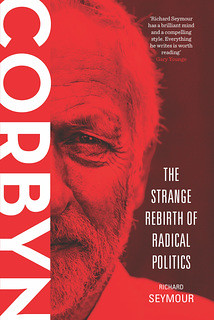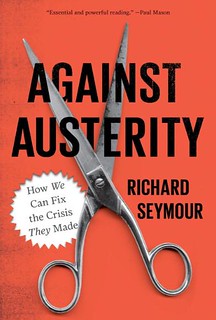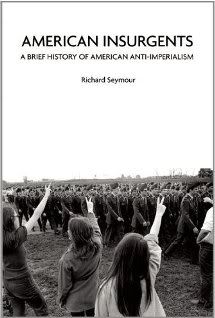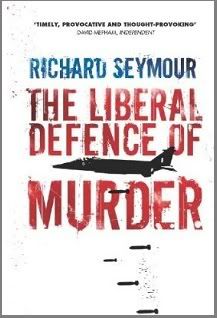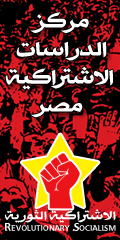Friday, October 06, 2006
Iranian Revolution posted by Richard Seymour
Some interesting footage here, despite the patronising tone:Note the charge in the atmosphere, the excitement, the sudden, amazing sense of true liberation, one that comes from the self-activity of people ready to try and create their own future. You can also see the Shah being interviewed in 1975 here and here. Watch him - you get a real in-depth understanding of why this bastard was overthrown.
It is always necessary to emphasise that the Iranian revolution was a more open and undecided affair at the time than it later appeared. For one thing, the form of rule that emerged was not even what was envisaged by the clerical leadership at the time. Khomeini had indicated that he and his clerics would not rule directly, and kept such phrases as ‘Islamic Government’ out of circulation – they never before or shortly after coming to power referred to vilayet e-faqih. Abdolhasan Bani Sadr, an early ally of Khomeini, said that even privately Khomenei had renounced ideas. But then, as Evard Abrahamian argues, (quoted in Chris Harman's The Prophet and the Proletariat), Khomeini's movement was based on "ideological adaptability and intellectual flexibility, with political protests against the established order, and with socio-economic issues that fuel mass opposition to the status quo". Khomeini did embed the principle of vilayet-e faqih in the consitution (as we'll see in a minute), but there was much criticism of it from his supporters, particularly in 1983, after which term disappeared. This reflects the class dynamics underlying the revolution, in which the interests of the politically powerful middle classes were not served by another monarch, and the insurgent working classes were not necessarily prepared to submit to one either. Opponents could threaten to unite factions against Khomeini if he tried to insist on the idea.
Khomeini’s earlier appointment of non-clerical Mehdi Bazargan and support of Bani Sadr had appeared to indicated that it was indeed the policy to pursue a unity government with a religious inflection, but principally as an extension of the nationalist revolt. The ultimate triumph of Khomeinists was due to the impetus for national unity during the US hostage crisis and later during the 1980-88 war, which overcame splits that occurred even among the hegemonic Khomeinists, based on the division between the popular classes and the rich bazaaris. Khomeini had slowly won power against a sporadic multiparty revolt during 1979-83. He used his power to appoint Friday prayer leaders, a rather important means of sustaining ideological hegemony. He built a parallel government through the Council for the Islamic Revolution – several groups and parties resisted this and they should be credited for doing so: their resistance kept the system from becoming a full-blown dictatorship. Iran, for an authoritarian state, has the unusual feature of including democratic elements. It is through these elements that people have been able to win important victories, despite the autocratic powers that accrue to the Council of Guardians - such as the right of women to claim wages for housework, for instance.
Immediately upon the victory of the revolution, many parties had been included in the transitional government, but leftists were excluded. A couple of the parties that were included were the liberal Islamic nationalist Freedom Movement (FM) and Muslim People’s Republican Party (MPRP). The FM was led by Bazargan as Prime Minister, and had over a third of the ministers in the Provisional Republican Government. Both parties were supported by the traditional middle class and some ulama – and they opposed both the Khomeinist and the non-Khomeinist left. The National Front (NF), secular liberal nationalists who had supported Mossadeq, also had third of ministerial posts.
More left-leaning members split to form the National Democratic Front (NDF) in March 1979. Other left organisations included the Mojahedin-e Khalq (MEK) which grew during and after revolution, after having been decimated by the Shah: they called for rule by peasants and workers, nationalisation of industries, an end to ties with West, close relations with Third World and Eastern Europe. The Fedayeen-e Khalq, (FEK), were also partially responsible for revolution’s victory. Tudeh were Soviet-oriented, while Maoist Peykar came from secular wing of MEK. There had been a strong Iranian working class element to the revolution, but it would be mistaken to overestimate this. At any rate, the two main marxist organisations beside the Tudeh, had few roots in the working class, and pursued strategies of individual terrorism that did not sit well beside Khomeini's strategy of galvanising a mass movement. The FEK tried to work with Khomeini and the Tudeh, but subsequently split into minority and majority factions, the latter backing Khomeini along with Tudeh. The left had no significant source of economic support unlike the clerics, who were heavily supporter by the bazaari class.
The Khomeinists founded the Islamic Republican Party (IRP) in 1979 with Khomeini’s approval – the main figure was Ayatollah Mohammad Beshti, and the party's drive was to unite the opposing interests of the poor and the merchants. The party formed ties to paralegal Revolutionary Guard (Pasdaran) and violent hezbollah. It got its main source of support from traditional middle class and often the migrant poor. Both the nationalists and the ulama respected Bazargan, and it was he who supervised the referendum, election and constituent assembly in the middle of strikes and uprisings by Kurds and Azerbaijanis – but the PRG soon had far less power than the Khomeinists and their organizations.
This took some skilled alliance-shifting, as well as some brutal repression. For instance, MPRP-led opponents of constitution took control of Tabriz in December 1979, and were violently suppressed by the Khomeinists. But the key to the early period was agreement between the Khomeinists and the left around nationalisation and anti-imperialism, and also of opposing middle class moderates and the gradualism of PRG. The Khomeinists came to dominate two new institutions – komitehs, initially autonomous organisations, genuine grassroots radical organizations, which had been opposed by PRG, but later taken over by Khomeinists with regulations and purges. The Khomeinists monopolised the judiciary, and promulgated a version of shari’a. Secret revolutionary courts tried and killed elements of old regime – moderates, including Bazargan, protested these, and Montazeri led a committee reducing their scope.
Khomeinists led the Pasdaran, and could use the Foundation for the Dispossessed, with all the Shah’s old wealth, to recruit working class supporters, while the Reconstruction jihad mobilised the youth by sending them out to rural areas with aid for the poor. The left meanwhile helped weaken the PRG, which they saw as pro-western liberal and capitalist - the long-term effect was to strengthen the Khomeinists. Khomeni had insisted on an early referendum allowing only vote for or against an Islamic Republic: the NDF, FEK and DPKI were the only groups to boycott it. A 98% positive vote was announced. The original draft for the constitution, by the way, was far more democratic than the final constitution. It did not mention the vilayet-e faqih, for instance, and gave no formal power to clergy beyond similar constitutional commission to what proposed in 1906-7. Khomeini would have submitted this to referendum, but both secular and religious groups pushed for further discussion – which in fact produced a much less democratic constitution. An 'Assembly of Experts' re-drafted constitution, including vilayet e-faqih. Article 4 says faqih has divine authority to rule and only answerable to God – later articles list those powers, such as control of army and Pasdaran, right to disqualify presidential candidates; power of majles restricted by Guardian Council (six ulama appointed by faqih, six jurists appointed by majles from a list prepared by supreme judicial council which was appointed by faqih. Khomeini was made faqih for life. Policies that the left had pushed for, such as general protections for citizens rights, free education up to middle school, provisions for eradication of poverty, prevention of foreign domination were included – but these were all general, while Khomeini’s provisions were specific.
Electoral procedures were rigged to favour clerics, and only a few secularists won while NF, NDF and left groups boycotted elections. Women not given equal status, and constitution emphasised their role in the home. Because of the splits over whether to back Khomeini and to what extent, and because of their weak class grounding, the left and liberal opponents of such measures did not unite to oppose this.
I mentioned that the hostage crisis was crucial in this episode, and it was. On November 4th 1979, the SFLI attacked and seized US embassy, and when they refused Bargazan’s order to evacuate, he resigned. Debate on the constitution was now ‘treacherous’, while the selective release of US embassy documents (which they ambassadors had tried to shred in the early days of the revolution) defamed moderates. The MPRP led the only effective opposition to constitution, with Ayatollah Shariatmadari issuing a fatwa against it. Constitutional referendum on Dec 2-3rd 1979, was boycotted by NF, MPRP, and Kurdish and Azerbaijani groups, but won anyway with a lowered vote.
Azerbaijani groups mounted an uprising in Tabriz, capturing radio and television stations. The Khomeinists, though repressive, were able to defeat this insurgency only by offering some autonomy. Having done so, the Pasdaran occupied MPRP headquarters, and executed several of the participants. In the same year, SAVAK was effectively re-formed as SAVAMA, with the assistance of Hosain Fardust, a former director of the Imperial Inspectorate.
Khomeini had courted those weary of clerical power by banning clerics from running for president in 1980. Bani Sadr won 10.7 million of 14 million votes – he was popular on the left for supporting nationalisation and he hoped for social-democratic Islamic Iran. But the President’s power was undermined by the growing strength of the IRP, who controlled the majles, the cabinet and the Supreme Court. The Iraqi invasion allowed Khomeini to split with Bani Sadr in Spring of 1981, which was the last block to the IRP. The CIR then gave an ultimatum to the left to leave universities in April 80, and Bani Sadr announced a Cultural Revolution, hoping to control it – the Khomeinists were the ones who controlled it.
When Bazargan resigned, Hussein accused Iran of meddling in Iraq’s affairs and on Sept 22nd 80, he invaded. He had never accepted the treaty over the Shatt al-Arab border signed with the Shah in 1975 – an issue that united Iranians, and gave Hussein no support from Khuzestan, although irregular Bassij had made effective incursions. The war and US sanctions caused rationing, the clergy was put in charge of distribution through the mosques.
The Algiers accord, meanwhile, had pulled a diplo-tarpaulin over the whole hostage mess, and saw Iran hand over hostages, in return for a US pledge not to interfere in Iran’s affairs, the liquidation of frozen assets and cooperation in prosecution of Pahlavi. Bani Sadr felt his talks had been scuppered, and he attacked the IRP and the outcome. Hezbollahs therefore attacked a Bani Sadr rally in March 81, and when he ordered police to arrest them, he was accused of violating the law. Some deputies called for his impeachment, and Khomeini dismissed him as armed forces commander.
The MEK was on bad terms with Khomeini, and the hezbollah regularly attacked their offices – they had supported the Kurdish rebellion, opposed the vilayet e-faqih, and boycotted the constitutional referendum. When the chief of Tehran's main prison was assassinated, the MEK were blamed and ultimately thousands were executed. Bani Sadr fled to France to form the National Council of Resistance (NCR), soon in collaboration with the NDF and the KDPI. The MEK were eventually discovered in their main hide out, and many leaders were killed: from then on they had to operate in Iraq and the West. In fact, their embarrassing pro-Iraq activities during the war drained any support they might have had in Iran, and caused the NDF and Bani Sadr to withdraw from the NCR.
The majles soon divided between Left Islamists (a populist faction of IRP) and conservatives. They rejected Khameni’s first choice for Prime Minister, and accepted Islamic Leftist, Mir Hosain Musavi. The Iranian government had recaptured all Kurdish territory by 1983, and a final victory in 1984 drove the KDP into Iraq. Tudeh and the FEK majority had backed Khomeini – but the Tudeh were eventually turned on in 1983, accused of spying, had their leaders executed, and were declared illegal along with FEK majority in May 1983. The second majles elected in 1984 was dominated by the IRP, and Khamene’i was re-elected in 1985. Interest-free banking was introduced in August 1983 (which made little difference since interest was merely reconstrued as 'rewards', 'prizes' or 'surcharges'). The repressive scope of the state was augmented in various ways. Judges were ordered to uphold fatwas from reputable Ayatollahs, and the majles passed a bill allowing flogging, amputation, stoning to death and capital punishment for sodomy – flogging has been common, the other practises much less so. In March 1980 there had been the retraction of Family Protection Law, and new law requiring 'Islamic dress': Khomeini had made a brief tactical retreat, but in July of that year, government employees were ordered to wear Islamic dress, and a year later the majles required every woman to do so. There followed the revival of polygamy and child marriage. This met considerable opposition, but perhaps not as much as it might have done, since the Shah's laws on womens' rights had been seen by many as largely beneficial to upper-middle class women.
The following factions developed in the new polity: the Islamic Left, the Islamic Right, and the Pragmatists (or Modern Right). Political and economic power was concentrated in clergy and bazaari hands. There were crackdowns on workers, but the loyalty of many poor people was retained by subsidising housing and mass consumption goods. The Islamic Left, meanwhile, retained a clear majority on the majles from 1984 to 1988. Iran-Contra weakened Khomeini and his supporters, not only domestically - because of the substantial diminution in anti-imperialist credibility - but also internationally - because the US reaction was to become publicly even more hostile to Iran. War, a fall in oil prices and the ensuing economic woes increased dissent. In July 1987, UNSC resolution 598 called for a cease-fire. Iraq accepted but Iran did not respond until the US destroyed several Iranian ships, oil platforms and a civilian airliner (killing 290). Khomeini took the hint, and transferred control of the armed forces to Rafsanjani, who accepted the Resolution. Despite any internal dissent, it can reasonably be said that by this point the hegemony of the Khomeinists had been so consolidated that in 1987, Khomeini dissolved IRP – it had ceased to exist properly as a party or be useful, and so the factions re-emerged as the Combatant Clergy Society (conservatives) and the Combatant Clerics Association (Islamic Left).
The defeat of the left in that revolution was not predestined, even if the structural capacities for creating socialism were limited, but was a result of considerable and prolonged internal struggle in which the national dynamic was eventually utilised to suppress the element of class struggle. Those who insisted on a choice between anti-imperialism and socialism actually got neither, because the Iranian government has since been a supporter of US imperialism in several ventures. But the problem with the revolution is not that they overthrew the bastard Shah, the single worst dictatorship in the world in his time, but that the revolution wasn't seen through, that it was curtailed by the eventual hegemony of the conservative bourgeoisie, the capitalist class and their clerical allies. Bush, who has recently arrogated dictatorial powers to himself and any future holder of his office through the Military Commissions Act, and whose puppet in Baghdad has recently awarded himself more of Saddam's old powers, would be delighted to install a new Shah, by whatever means avail themselves to him. A Shah, that is, who integrates Iran into the WTO and who says sweet things about Israel - like the old Shah, he would be permitted to pursue nukes if he wanted. Like the old one, his torture and murder would be graciously concealed and funded by the US. Like the old Shah, he would be overthrown.


